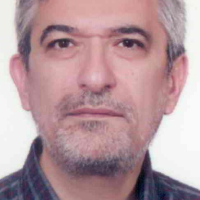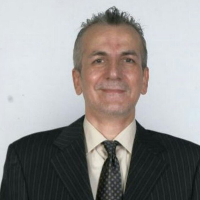Skin disease diagnosis based on tissue frequency information analysis using sonogram patterns
Today early detection of common cancer with modern smart calculation is the most interesting issue due to the increased chances of successful treatment. Skin cancer is a serious and dangerous complication that threatens the lives of many people and if not diagnosed in time, it will have bad consequences. It is the fifth most common cancer in the female population and the sixth most common cancer in the male population in the world. At present, in the discussion of skin diseases, ultrasound is a low-cost and, of course, low-consumption method; during which dermatologists look for unusual symptoms on ultrasound. But ultrasound scans are seemingly complicated, and the early signs of the disease usually seem insignificant or normal; this is the main reason for many misdiagnosis that can be specific to human factors. Skin ultrasound can help diagnose skin cancer early, but it depends directly on the correct interpretation of the ultrasound by a specialist and in many cases can be misleading. Because the consequences of these errors have become costly to humans, there has been a great deal of interest in developing methods for intelligently identifying such abnormalities as a means of assisting dermatologists in accelerating the diagnosis and preventing unnecessary sampling. The most aim of this study is offering a new procedure by intelligent analyzing skin frequency to diagnose skin cancers with high true negative rates and low false positive rates. In this study, the main goal is the intelligent diagnosis of malignant skin lesions with the help of ultrasound analysis. What distinguishes this study from previous research in this field is the new perspective that this research has on this imaging method and uses it as a tool for processing and analyzing the abundance of skin tissue.
The theory of biological resonance said that each cell in the whole of human body has a unique resonance due to their bio frequency and this frequency could changes if the cellchr('39')s texture and status change. In the method of this article, this matter has been used to analyze the structure of skin texture. What can be concluded from this research is that due to the different reactions of two tissues of healthy and unhealthy skin, in the face of ultrasonic stimuli, the frequency response of these two tissues is different from each other; for this reason, the frequency of return waves from those two tissue samples is different. The most important approach in this study is to try to achieve the ability to use the concept of tissue frequency behavior in the diagnosis of lesions. As explained in this article, the innovative method of this research tries to use the concept of tissue frequency changes due to injury as the main parameter of lesion identification and in fact offers a new way to extract this change in frequency behavior from ultrasound waves. This means that, in order to offer a new method of early detection of skin tissues malignancy, ultrasonic echoes wave of skin, has been analyzed by various complex frequency calculations using artificial neural networks. The artificial neural network used in this research is perceptron multilayer pattern recognition. In the design and architecture of this complex network, many parameters are involved that must be carefully studied and analyzed before training to guide the network in the best possible way. The most important of these parameters are the number of hidden layers, the number of nerve cells in each layer and the number of trainings. The important point in this case is the effect of these parameters on different data properties, number of samples, input vector dimension and so on. The database of this study included 400 ultrasound images of patients in the age range of 18 to 68 years, of which 220 samples in the category of basal cell carcinoma skin cancer, and 180 samples in the category of benign lesions such as Skin moles, fungi and lipodermatic lesions or kerato ulcers were located. A noteworthy point in these data was the presence of definite pathological reports with them, which in turn significantly increases the accuracy of the results. To set up the network and achieve the optimal result in this research, 60% of the available data was allocated to the training model, 20% to the test model and 20% of the data as data that the network has never encountered.
This study was validated by 400 patients data; the result of this study led to (AUC = 0.986) in order to detect skin malignancy, and has been demonstrated with comparable biological accuracy. With the help of artificial neural networks, it was possible to judge the malignancy or benignity of image lesions with very high accuracy and error rate in the range of 10-2. On the used threshold in this study, the sensitivity and specificity levels reached to 93.7% and 97.8%.
This study could propose an accurate, non-invasive method to early diagnosing of skin cancers via a real-time procedure. Finally, in comparison with the diagnostic method presented in this article, with the common diagnostic and therapeutic methods in conventional medicine, the benefits and advantages of this method are briefly classified in the following few lines:i. No need for sporadic referrals and spending less time and money ii. Non-invasive method and less side effects and more patient safety iii. Early diagnosis of the disease in the early stages of malignant lesion formation iv. Ease of procedure and no discomfort and pain for the patient v. Possibility of expanding the application of this method in other medical departments vi. The high accuracy and high speed of diagnosis with the help of this method is undeniable and in diseases such as cancer, which play a key role in achieving the first step in achieving treatment, the use of the proposed method can be very effective.
- حق عضویت دریافتی صرف حمایت از نشریات عضو و نگهداری، تکمیل و توسعه مگیران میشود.
- پرداخت حق اشتراک و دانلود مقالات اجازه بازنشر آن در سایر رسانههای چاپی و دیجیتال را به کاربر نمیدهد.




